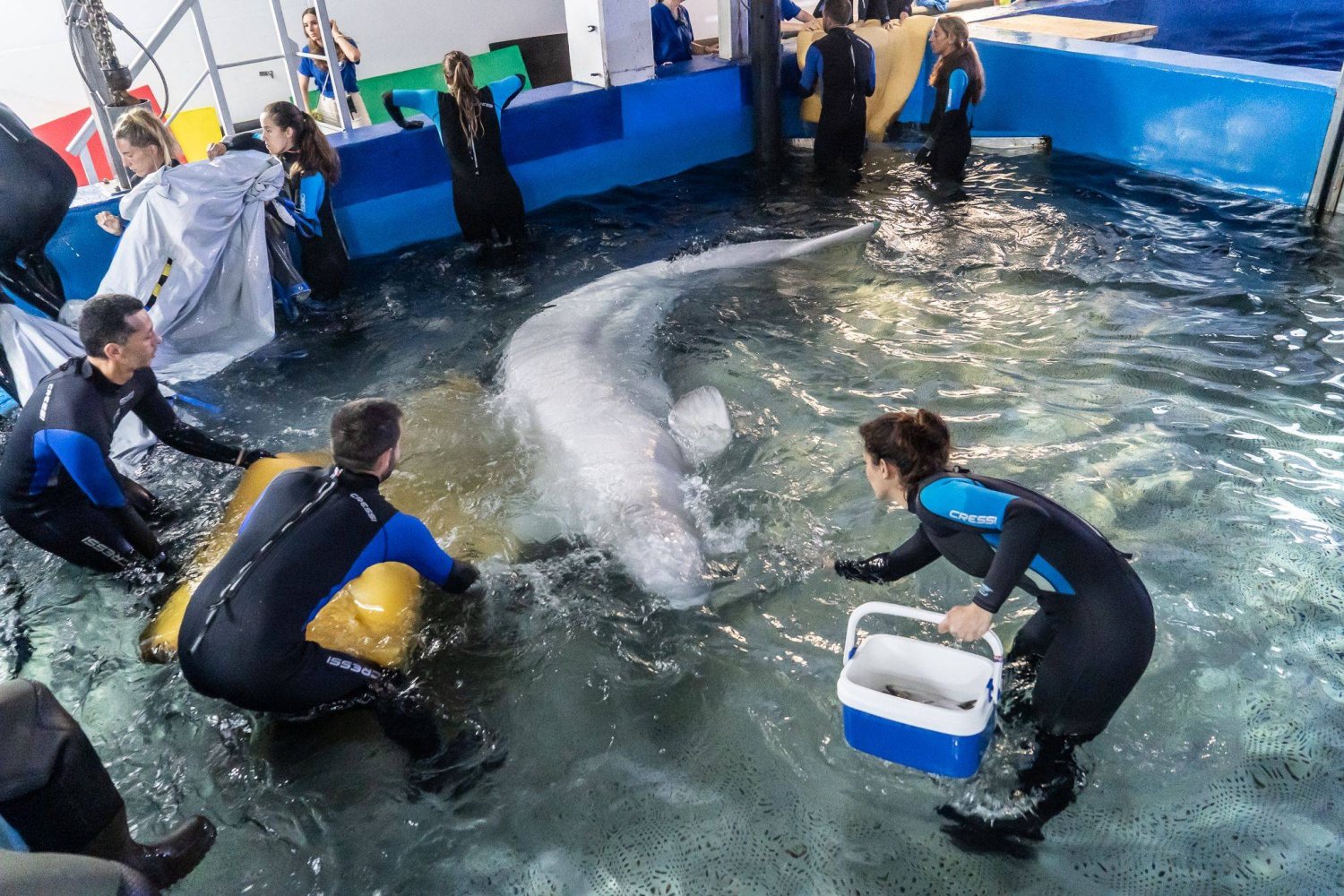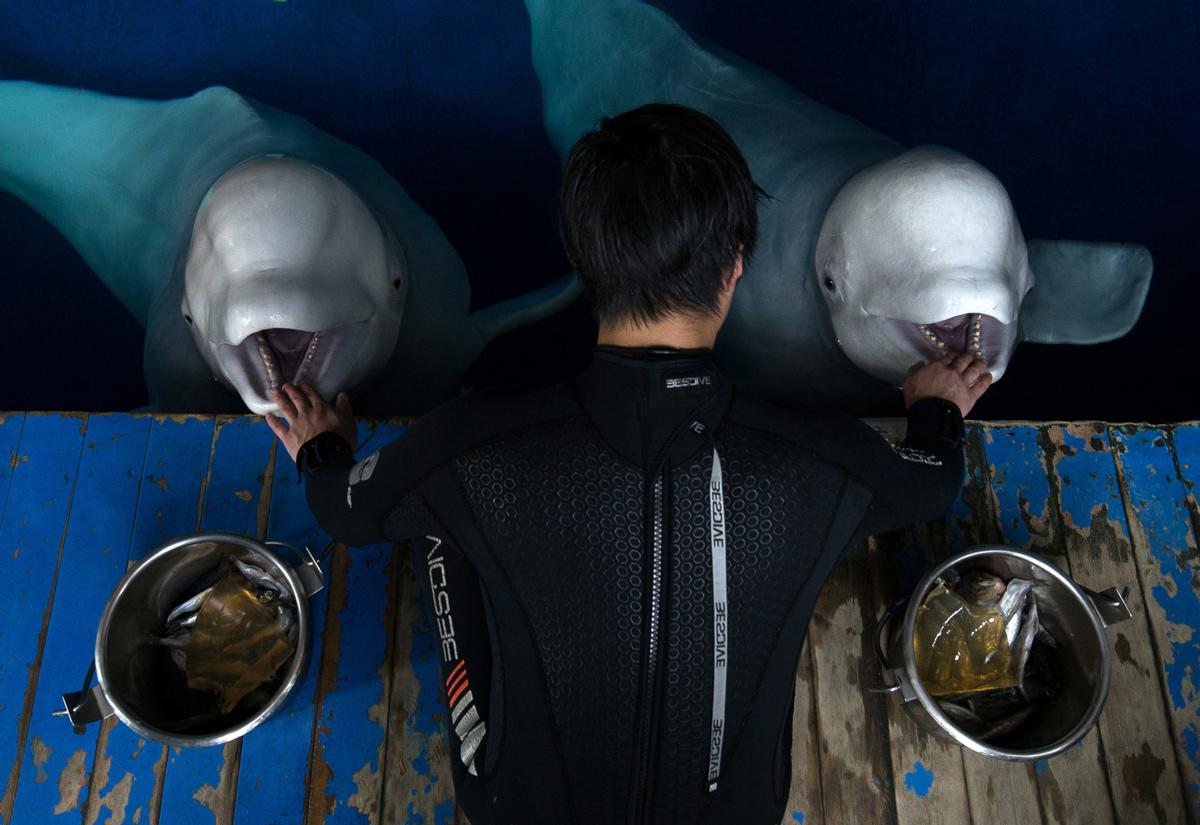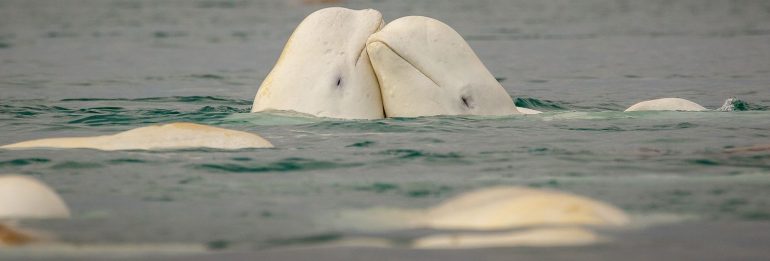Two beluga whales, Plombir and Miranda, were evacuated from the Nemo dolphinarium in Kharkov due to increased Russian shelling. They were taken to the Oceanogràfic de Valencia, the largest aquarium in Europe, located in Valencia, Spain. The entire journey took 36 hours.This information was distributed by The New York Times.
Beluga whale rescue: From Kharkov to Valencia in 36 hours
Based on the unstable situation in Kharkov, the owners of the Kharkov branch of the Nemo Dolphinarium are faced with a number of serious problems affecting the health and well-being of their valuable inhabitants, the beluga whales. Firstly, due to the intensification of military operations and shelling in the region, it has become difficult to maintain the optimal water temperature in the dolphinarium, which is critical for the whales’ comfortable stay. The vibrations and sounds of war could also create stress and discomfort for animals whose sensitive systems may respond to such environmental changes.
In addition, the safety of the dolphinarium itself was jeopardized when one of the shells fell in close proximity to the building, highlighting the seriousness of the threat to the life and health of the animals. In a military situation, there was also a problem with the supply of food for whales. The diet was significantly reduced due to a shortage of squid, herring, mackerel and other types of fish, which led to difficulties in providing the necessary nutrition for the animals.

In response to these threats and challenges, the owners of the dolphinarium decided to evacuate the beluga whales to a safe place. The transfer operation took 36 hours, including a long overland journey to Moldova and a subsequent five-hour flight to Valencia, home to Europe's largest aquarium, the Oceanogràfic de Valencia. Here the animals were provided with comfortable conditions with cold water close to their natural habitat in the Arctic. Thus, thanks to decisive measures and the organization of evacuation, it was possible to ensure the safety and well-being of Ice Cream and Miranda, as well as prevent threats to their health in the context of a military conflict.
Unique beluga whales: inhabitants of the icy seas and depths of the Atlantic
Beluga whales, or white whales, are one of the most unique and amazing marine mammals. They belong to the dolphin family and live in the northern seas, especially the Arctic and North Atlantic Ocean. Adult beluga whales can reach a length of up to 5-6 meters and weigh up to 1-1.5 tons. Their body is usually white or light gray, which helps them hide among the ice and snow that constitute their natural habitat.
Beluga whales are known for their sociable behavior and social structure based on close bonds in groups called pods. They communicate with each other using a variety of sounds and whistles, which play an important role in coordinating hunting and protecting them from predators. Beluga whales feed on various types of fish such as squid, herring, cod and other marine organisms, which they hunt in the cold waters of their marine spaces.

One of the unique features of beluga whales is their ability to adapt to life in icy conditions. Their body is provided with a special fat layer that helps retain heat in cold water and protects against heat loss. This allows them to survive in conditions where most other marine mammals struggle due to cold temperatures.
In recent years, beluga whales have become the object of interest and conservation as their numbers are threatened by climate change, sea pollution, and hunting. Many efforts are being made to conserve and restore populations of these beautiful sea creatures to ensure they have a future in their natural habitat.

